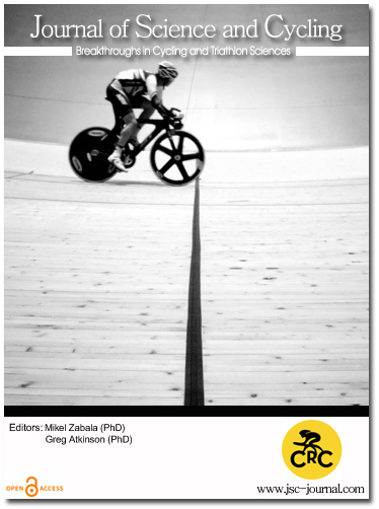Pedaling Variability in Cycling: A Nonlinear Approach
Keywords:
Variability, Nonlinear Dynamics, Largest Lyapunov Exponent, Saddle Height, Human-Bicycle SystemAbstract
Human movement is a complex phenomenon that varies across different levels and scales. Variability is often seen as a source of error or noise to be reduced or eliminated, especially in motor learning and rehabilitation. However, recent advances in nonlinear dynamics have challenged this view and suggested that variability is not only unavoidable, but also essential for healthy and functional movement (Stergiou & Decker, 2011). According to this perspective, variability reflects the adaptability and flexibility of the neuromuscular system to changing demands. Moreover, variability has a specific structure and organization that can be quantified by nonlinear measures of complexity, such as entropy, fractal dimension, largest Lyapunov exponent (LyE). These measures can reveal an optimal state of variability, characterized by a balance between stability and flexibility, order and disorder, predictability and unpredictability. This state is associated with mature motor skills and healthy conditions, while deviations from this state can indicate rigidity or instability, lack of coordination or control, pathology or impairment (Stergiou, Harbourne & Cavanaugh, 2006). Therefore, studying variability and its nonlinear properties can provide new insights into the mechanisms and principles of human movement, as well as novel tools for assessment and intervention. This can have important implications for various fields and disciplines that deal with movement generation, such as robotics, psychology, cognitive science, and neuroscience. To illustrate the potential of this approach, we conducted a study on the relationship between human and bicycle as a human-machine system, as an example of applying these concepts to a real-world scenario. We started from the study of Wurdeman et al. (2013). They investigated how the LyE of different lower-limb joints related to the preference of prosthetic devices in individuals with transtibial amputation. They found that the LyE of the prosthetic ankle was strongly correlated with the preference, suggesting that the patients preferred the prosthesis that allowed them to maintain an optimal level of variability in their gait. This implies that the LyE can be used as an objective measure to evaluate the suitability and effectiveness of prosthetic devices for gait rehabilitation. Based on this finding, we hypothesized that a similar analysis of variability and LyE can be applied to study the human-bicycle system. For example, the optimal saddle height is generally determined by the Holmes static method with a knee flexion angle (KFA) between 25° and 35° (Swart & Holliday, 2019). We measured the joint angles of the knee on the sagittal plane during 5 minutes of cycling with a resistance that allowed the subject to maintain a comfortable cadence (about 90rpm). Four different conditions were tested, varying the saddle height. The measurements were performed using an optoelectronic system. The variability of the time series was analyzed with linear measures such as the standard deviation and nonlinear measures such as the LyE. The results show that the highest values of LyE correspond to the only condition that allows a KFA between 25° and 35°. We propose that the variability and LyE of the joint angles can reveal the level of coordination and control between the human and the bicycle, as well as the adaptability and efficiency of the system to different conditions. This could provide new insights into the biomechanics and ergonomics of cycling, as well as the design and optimization of bicycles.
Downloads
Published
How to Cite
Issue
Section
Copyright (c) 2024 Journal of Science and Cycling

This work is licensed under a Creative Commons Attribution-NonCommercial-NoDerivatives 4.0 International License.
Authors contributing to Journal of Science and Cycling agree to publish their articles under a Creative Commons CC BY-NC-ND license, allowing third parties to copy and redistribute the material in any medium or format, and to remix, transform, and build upon the material, for any purpose, even commercially, under the condition that appropriate credit is given, that a link to the license is provided, and that you indicate if changes were made. You may do so in any reasonable manner, but not in any way that suggests the licensor endorses you or your use.
Authors retain copyright of their work, with first publication rights granted to Cycling Research Center.






